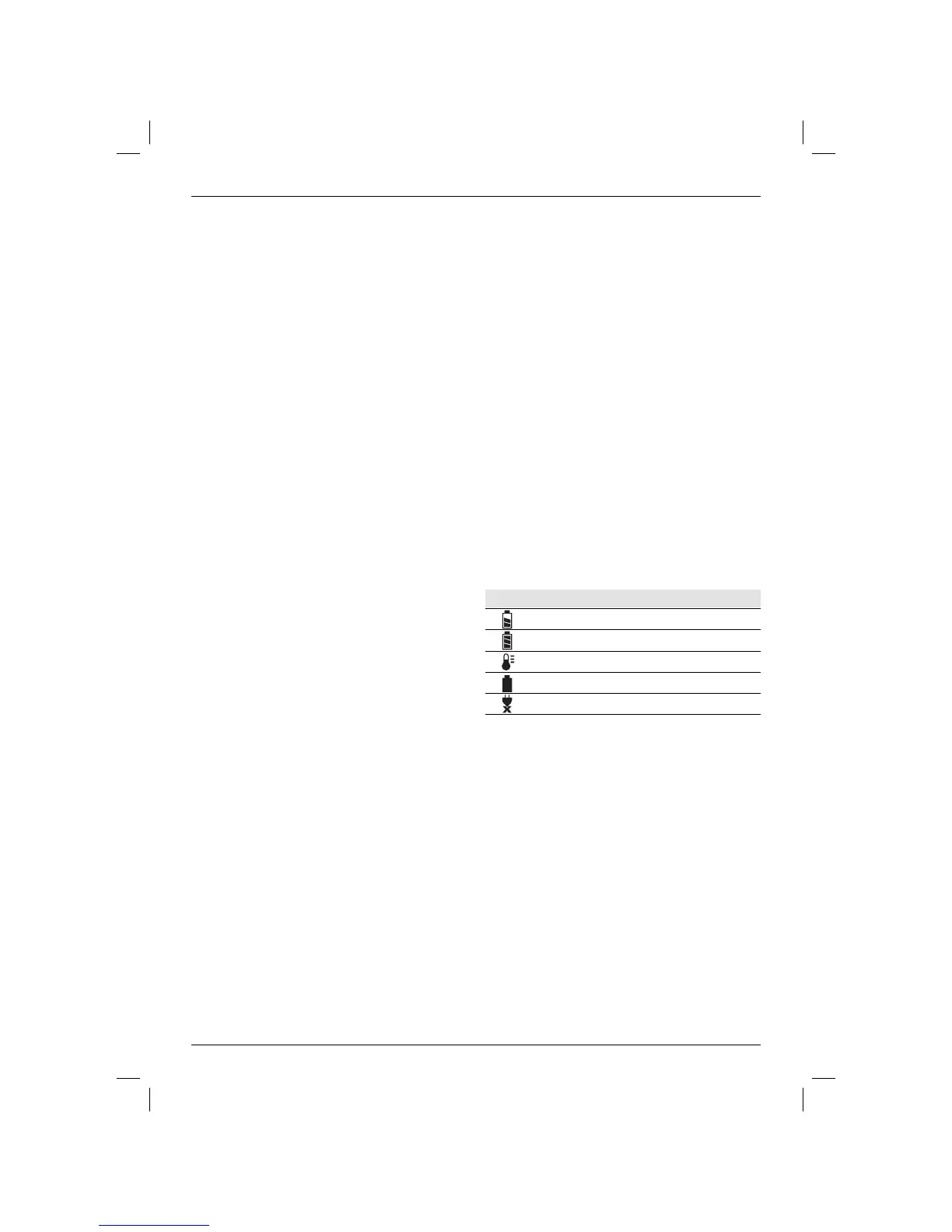ENGLISH
24
• Do not expose charger to rain or snow.
• Pull by plug rather than cord when
disconnecting charger. This will reduce risk
of damage to electric plug and cord.
• Make sure that cord is located so that it
will not be stepped on, tripped over or
otherwise subjected to damage or stress.
• Do not use an extension cord unless it
is absolutely necessary. Use of improper
extension cord could result in risk of fire,
electric shock or electrocution.
• When operating a charger outdoors, always
provide a dry location and use an extension
cord suitable for outdoor use. Use of a cord
suitable for outdoor use reduces the risk of
electric shock.
• Do not block the ventilation slots on the
charger. The ventilation slots are located
on the top and sides of the charger. Place
the charger in a position away from any heat
source.
• Do not operate charger with damaged cord
or plug — have them replaced immediately.
• Do not operate charger if it has received
a sharp blow, been dropped or otherwise
damaged in any way. Take it to an authorised
service centre.
• Do not disassemble the charger; take
it to an authorised service centre when
service or repair is required. Incorrect
reassembly may result in a risk of electric shock,
electrocution or fire.
• In case of damaged power supply cord the
supply cord must be replaced immediately by
the manufacturer, its service agent or similar
qualified person to prevent any hazard.
• Disconnect the charger from the outlet
before attempting any cleaning. This will
reduce the risk of electric shock. Removing
the battery pack will not reduce this risk.
• NEVER attempt to connect 2 chargers together.
• The charger is designed to operate on
standard 230 V household electrical power.
Do not attempt to use it on any other
voltage. This does not apply to the vehicular
charger.
SAVE THESE INSTRUCTIONS
Chargers
The DCB105 charger accepts 10.8 V, 14.4 V and
18 V Li-Ion (DCB121, DCB123, DCB140, DCB141,
DCB142, DCB180, DCB181, DCB182, DCB183
and DCB185) battery packs.
This charger requires no adjustment and is designed
to be as easy as possible to operate.
Charging Procedure (fi g. 2)
1. Plug the charger into an appropriate 230 V
outlet before inserting the battery pack.
2. Insert the battery pack (d) into the charger,
making sure the pack is fully seated in the
charger. The red (charging) light will blink
continuously indicating that the charging
process has started.
3. The completion of charge will be indicated by
the red light remaining ON continuously. The
pack is fully charged and may be used at this
time or left in the charger.
NOTE: To ensure maximum performance and life of
Li-Ion batteries, charge the battery pack fully before
first use.
Charging Process
Refer to the table below for the state of charge of
the battery pack.
State of charge
charging –– –– –– ––
fully charged –––––––––––––––––
hot/cold pack delay –– • –– • –– • –– •
x
problem pack or charger • • • • • • • • • • • •
problem powerline •• •• •• •• •• ••
This charger will not charge a faulty battery pack.
The charger will indicate faulty battery by refusing to
light or by displaying problem pack or charger blink
pattern.
NOTE: This could also mean a problem with a
charger.
If the charger indicates a problem, take the charger
and battery pack to be tested at an authorised
service centre.
Hot/Cold Pack Delay
When the charger detects a battery that is too hot
or too cold, it automatically starts a hot/cold pack
delay, suspending charging until the battery has
reached an appropriate temperature. The charger
then automatically switches to the pack charging
mode. This feature ensures maximum battery life.
XR Li-Ion tools are designed with an Electronic
Protection System that will protect the battery
against overloading, overheating or deep discharge.
